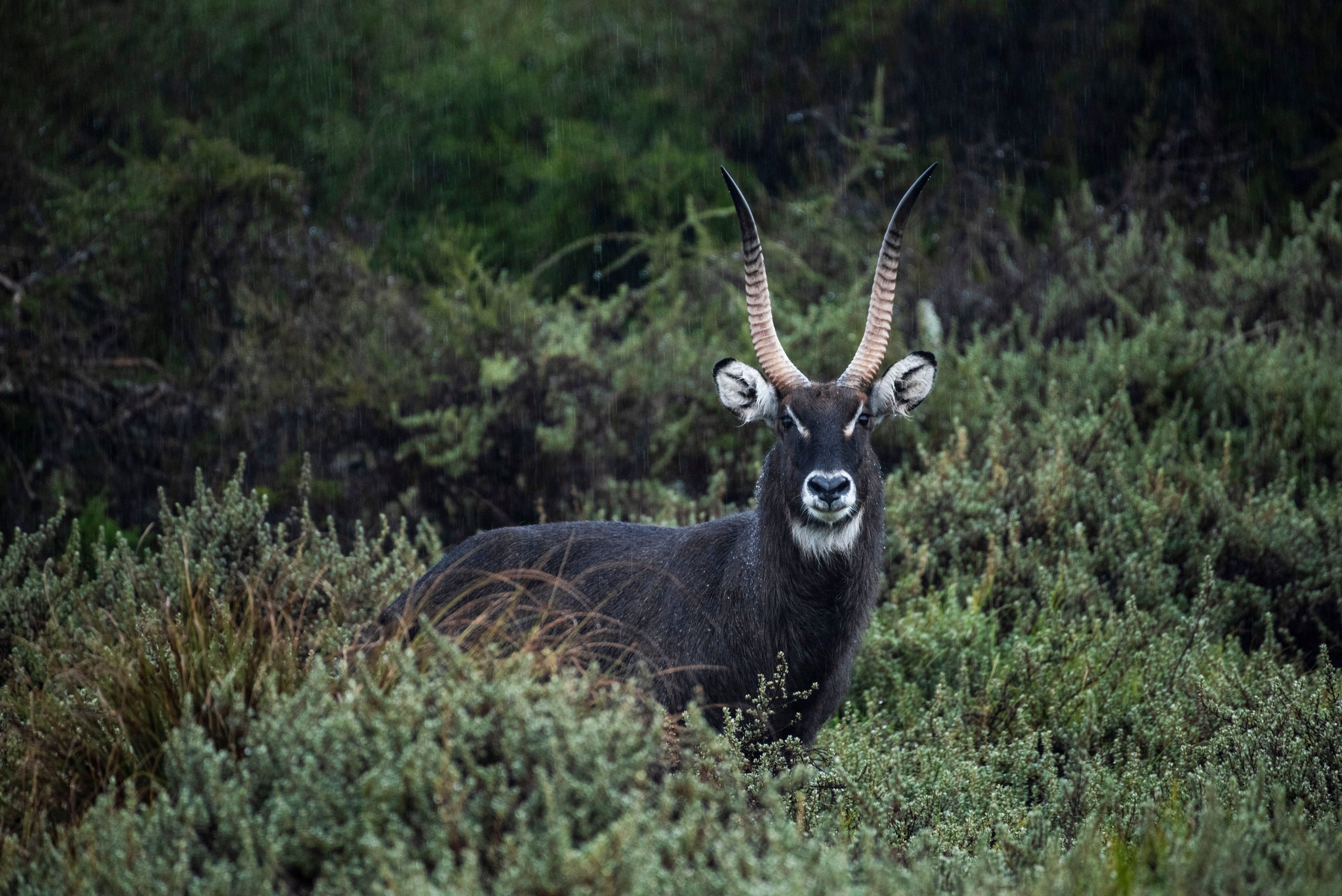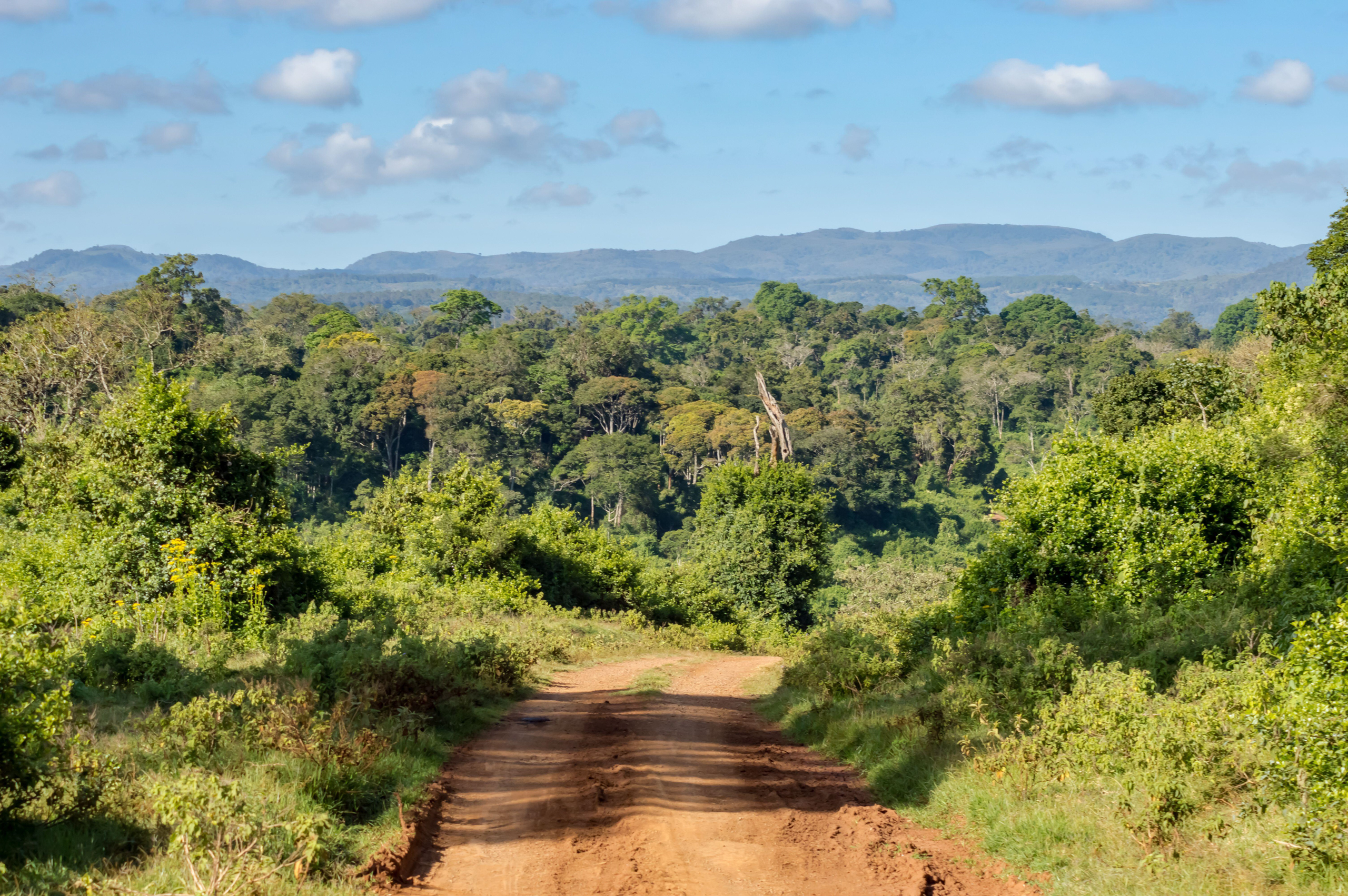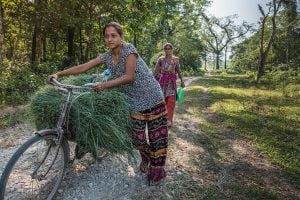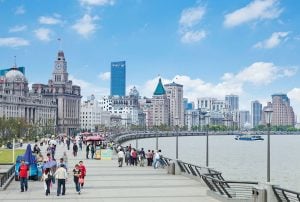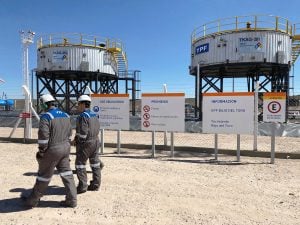The Aberdare Mountains in central Kenya are a biodiversity haven, home to black leopards and the critically endangered black rhino.
Currently under consideration for Unesco World Heritage status, Kenya’s highways authority is nonetheless seeking to clear parts of it to upgrade a road.
The Aberdare range, known locally as the Nyandarua Mountains, is one of the country’s five main water-catchment areas, supplying Nairobi, the nearby Lake Naivasha, and the Lorian Swamp wetlands in east Kenya.
The ecological importance of the range has long been understood, with 76,600 hectares of it designated as national park and 108,400 hectares of it as forest reserve.
As well as leopards and rhinos, the reserve is frequented by servals, elephants and mountain bongos. Over 300 bird species have been recorded, including the vulnerable Aberdare cisticola and endangered Abbott’s starling. The Aberdares are also home to endemic species of shrews, mole rats and frogs, and over 60 plant varieties. This diversity of life has made the reserve a tourist attraction.
As a signatory to the Convention on Biological Diversity, Kenya is obliged to protect all globally threatened species within its borders. The proposed widening and tarmacking of the 50km road, which passes through the forest reserve, has been met with sustained resistance from environmentalists.
The road connects Ihithe, on the eastern side of the Aberdares in Nyeri county, to Ndunyu Njeru in Nyandarua county, on the western side. The proposal is part of the KES 4.4 billion (USD 34 million) Mau Mau Road project, conceived to improve road links in the Mount Kenya region.
Upgrading the Aberdare road would cut certain journey times roughly in half by facilitating journeys across the mountain range rather than around it, according to an environmental impact assessment by the Kenya National Highways Authority (KeNHA) KeNHA. The assessment explains that the upgrade would triple the road’s footprint, from an estimated 52 to 156 hectares. It says vegetation will be cleared to make this possible, namely 75 hectares of bamboo, 14 of forest and 14 of exposed grasslands – land clearing equivalent to 170 football pitches.
A forest under threat
Over the years, the Aberdare Forest Reserve has faced constant development pressure from both national and county governments.
In 1989, following years of poaching, snaring, logging and conflict between wildlife and farmers, an initiative to fence off the forest’s most ecologically significant area was born. The Rhino Ark Kenya Charitable Trust, a conservation charity, supported the initiative and successfully delivered a 400km electric fence around the Aberdare Conservation Area in 2009.
In 2020, the local government of Nyandarua applied to sell off 163 acres (66 hectares) of the 450,000 acres (182,100 hectares) covered by the Aberdare range for dairy farming and to expand a local township.
This move prompted a concerned citizen, Mercy Randa, to start a petition against the dairy ambitions. “I do not support the construction of a road or a milk factory within the Aberdares,” explains Randa. “Once Nyandarua opens the door to one project, there will be no stopping. And if we weigh the benefits of milk and water, water by far outweighs the benefits of milk.” Randa’s petition garnered nearly 9,000 signatures. The 163 acres have not yet been sold.
The Aberdares are also experiencing the pressures of a changing climate. In February 2023, during a prolonged drought, more than 40,000 acres (16,200 hectares) were destroyed by wildfires, which reportedly started on dry grasslands. At the same time, rivers originating in the Aberdares, such as the Ewaso Ng’iro, dried up.
A contentious history
In 2009, the National Environmental Management Authority (Nema) rejected KeNHA’s proposal to upgrade the Aberdare road, citing inadequate environmental impact assessments. Among the issues reportedly raised by Nema in a letter to KeNHA were potential threats to endangered tree species and the area’s hydrological health.
Nema declined to share a copy of the letter with Dialogue Earth, but according to Rhino Ark it said: “The proposed project will not enhance sustainable development and sound environmental management.” Nema asked KeNHA to re-design its plans or “explore an alternative site.”
In August 2022, KeNHA issued a tender notice for the road upgrade, without the necessary approvals from Nema, the Kenya Forest Service or the Kenya Wildlife Service. As such, the project could not progress and the tender notice was ultimately cancelled.
Efforts made by Dialogue Earth to obtain official comments from the wildlife and forest services proved unsuccessful. However, a wildlife service source intimated that its stance must follow the government’s. And a forest service source simply said the matter has “a lot of stink”.
The Conservation Alliance of Kenya, which brings together 73 member organisations, has also been involved with this case. Its chief executive officer, Steve Itela, tells Dialogue Earth: “The concerns we have are around conservation and the fact that our parks are also protected.”
“There are laws that cover the conservation of the Aberdare National Park, which is covered under the Kenya forest act and Kenya wildlife act,” he added.
While different bodies are opposing the construction of the road, some residents believe it will ease transportation problems and open up business opportunities for them.
Simon Ndegwa Nderitu, a shopkeeper living in Ndunyu Njeru, says he has no objections as transport has been a big problem for him. “The road as it is now is impassable because of the rains,” he says. “We currently use 270km to travel to Nyeri and we are incurring very huge losses on this road in terms of transportation costs. Our fresh produce often gets damaged while in transit.”
Presidential intervention
In May 2023, Kenya’s president, William Ruto, fired back at conservationists over the road project during a visit to Nyandarua: “Some people have taken us to court over environmental concerns. Senator Methu [of Nyandarua], I request you to persuade them to drop the case, and I will allocate the necessary funds.”
In January of this year, Nema issued a licence for the highways authority to build the road. It will include underpasses, tunnels, overpasses and viaducts, according to the licence. The environmental authority cited these as measures to minimise impacts on the Aberdare ecosystem.
On 15 April, a coalition of NGOs, including the Centre for African Justice, Peace and Human Rights, secured a conservatory order, which halted work on the road pending a hearing at Nyeri’s environmental and land court. This order has since been extended, and in June the court asked the chief justice of Kenya to select a bench of judges to hear the case.
Faith Odhiambo, chair of the Law Society of Kenya, says court orders must be respected whatever the ruling: “No proper public participation was done and due process was not followed on this matter. The rule of law must be followed and obeyed.” She says the Law Society will continue to contest this matter and fight to conserve the environments of the Aberdares.
